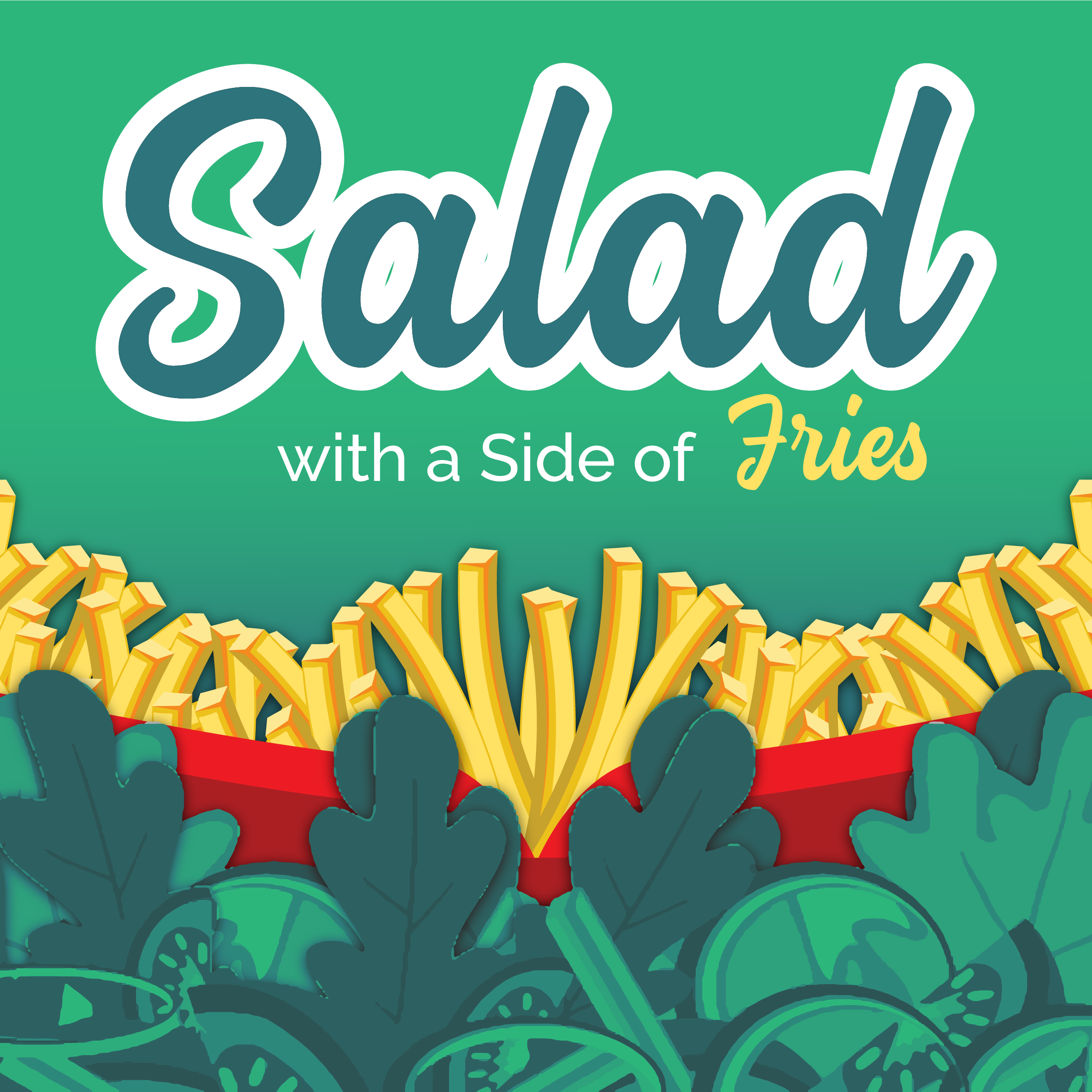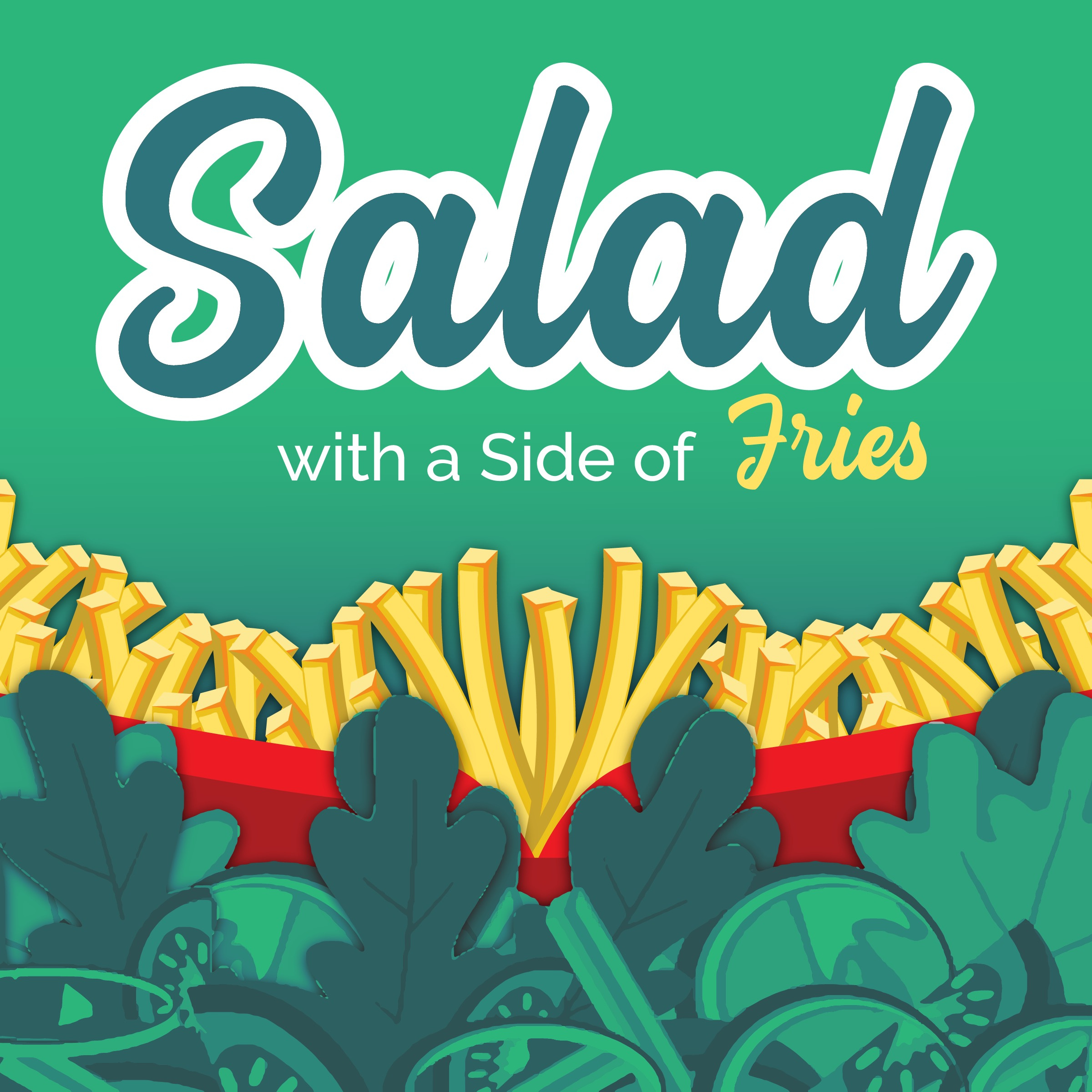bonus
Nutrition Nugget: Stability
Nutrition Nugget! Bite-sized bonus episodes offer tips, tricks and approachable science. This week, Jenn is talking about stability and why it’s more than just staying upright—it’s a cornerstone of our health. Too often, we focus only on cardio or strength, forgetting that proper physical fitness requires strength, flexibility, and stability working together. Jenn explores how balance training supports not only your daily activities but also your long-term health. With stability training for longevity, you’ll discover how minor tweaks to your fitness routine can improve physical balance, prevent injury, and keep you active for years to come. Could stability be the missing piece in your wellness journey? Like what you're hearing? Be sure to check out the full-length episodes of new releases every Wednesday. Have an idea for a nutrition nugget? Submit it here: https://asaladwithasideoffries.com/index.php/contact/
RESOURCES:
A Salad With A Side Of Fries Merch
A Salad With a Side of Fries Instagram
Bone Health & the Problem with Bone Density Scans
KEYWORDS: Jenn Trepeck, Nutrition Nugget, Salad With a Side of Fries, Health Tips, Wellness Tips, Stability, Staying upright, Cardio, Strength, Flexibility, Balance training, Stability training for longevity, Fitness routine, Physical balance, Prevent injury, Balance
Transcript
[00:00:29] Balance, like physical balance, not balance in our food choices or balance between work and life or any other time or way in our lives these days. We use the word balance. I mean physical balance or stability, the ability to remain upright, to not fall over, to catch ourselves from falling. And I believe this is so foundationally important for health.
[:[00:01:30] Cardio, strength, flexibility, and stability or balance. Rj, can I ask you a question?
[:[00:01:40] Jenn Trepeck: If you had to guess in a year how many Americans end up in the emergency room because of a fall, what would you say?
[:[00:02:02] They have no idea how conducive that is to just general joint health. Yep. Up the kinetic chain.
[:[00:02:07] RJ: You know,
[:[00:02:14] RJ: A a lot. How many Americans in a year? Mm-hmm. To at least a million,
[:[00:02:29] RJ: Do you have a statistic on like athletes in general just
[:[00:02:34] RJ: Oh, okay. Okay.
[:[00:02:48] John nsta about bone density and the problem with bone density scans, we talked a little bit about some of this, and he said, and by the way, this was late 2023, so at that time [00:03:00] he said, every 30 seconds, somewhere in the world, somebody with osteoporosis is breaking a bone. Right? He also said, if you have osteoporosis and fracture a hip.
[:[00:03:40] Also supports longevity in other ways beyond just preventing falling. So because fundamentally when we practice balance, we challenge our balance, we build strength, and studies have shown that strength and balance are related. So that's why I said to you, I think [00:04:00] athletes certainly would have a lesser number than the average person in terms of the stats of ending up, you know, in an emergency room because of a fall.
[:[00:04:22] RJ: Oh yeah. Biometrics.
[:[00:04:28] RJ: Oh yeah. That, that also, yeah.
[:[00:04:37] And balance, right? These two things are related. Balance and stability is really what we need to prevent these falls, right? In addition to the muscle. So I'm sure some of you are going, but really right, if we just stay off ladders and step stools as we age. Isn't that enough? [00:05:00] And that I say, no, sorry, not sorry.
[:[00:05:37] That simply compounds the issue. So we have the muscles that support our bones and joints, and that's a piece of stability. The other piece of stability are our senses. So there are three sensory systems that contribute to stability, vestibular, [00:06:00] visual, and proprioceptive systems. So vestibular is connected to the inner ear.
[:[00:06:32] So there are receptors in muscles, in joints, in ligaments, in in the skin that connect to our proprioception. So all three systems, the vestibular, the visual and proprioceptive systems decline with H and at the same time, we can use these systems. To help ourselves. So what I love about adding balance or stability training to your routine is that it doesn't have to [00:07:00] take up a ton of extra time.
[:[00:07:24] So essentially using your core and your legs supports stability. So you could stand on one foot while doing a bicep curl. Any movement that we do standing or upright requires some level of stability, and when we alter that center of gravity, we give the body added challenge. So this might look like standing on one foot, doing a bicep curl.
[:[00:08:16] Maybe close your eyes, right? Eliminate one of those other sensory systems and that's added challenge.
[:[00:08:28] Jenn Trepeck: You do. You could use, you know, like in gyms they have the half bosu thing, or a balance board. Yeah. First of all. Yep. Well, but the half one that people will use for balance and the thing that I say on that is work with a professional if you're using it, I see a lot of people kind of.
[:[00:08:48] RJ: surfing on it while they're doing their battle ropes.
[:[00:08:58] RJ: I know. How can be.
[:[00:09:07] You could walk around your house like you're on a tightrope. Where your heel is going directly in front of the toe of the other foot and walking like you're on a tightrope. That
[:[00:09:19] Jenn Trepeck: Challenges are stability.
[:[00:09:25] Yeah, walk on your tippy toes. They're laying yellow more. You're
[:[00:09:31] RJ: Yeah. There's another called heel toe walk where you, you start on your heel, you roll onto the ball of your foot and then you tippy toe and you just keep walking like that.
[:[00:09:56] You could not use your hands and stand up from a chair [00:10:00] or get up off the ground again. That's a great no hands. Tai Chi also works balance and stability over time to make it more challenging. You can hold various positions for longer. You could add more movement while you're holding one leg in the air, or like we said before, close your eyes while you're doing something.
[:[00:10:49] Can help in the case of falling, because if we can catch ourselves without breaking a bone in the upper body, that would be helpful. So I'm a fan of the entire [00:11:00] body, but especially when it comes to that stability piece. Core, legs, glutes, back, ankles, feet. You know, the more muscle we have to support the joints and bones, the better off we're going to be.
[:[00:11:22] Jenn Trepeck: Right now, in an ideal scenario, we're not catching ourselves entirely with our upper body, which is I think the theory behind doing all of the other pieces, and I am with you, it makes sense to work everything so that in that scenario.
[:[00:12:07] I'm choosing my words carefully. I'm just gonna say, it must be part of it. Say something to ensure that it's,
[:[00:12:29] Stand on one foot, close your eyes, and they'll say, all right, everybody ready? 30 seconds, let go. As soon as you're about to fall, open your eyes and then look around before you even rely on using your hands. And they, they love it. Yeah, it's fun for them.
[:[00:12:49] You could do it while you're waiting for something else to happen. So there you have it, friends. Stability is the fourth pillar of proper [00:13:00] movement, fitness, activity, routines. Well, as always, everybody, I'm Jen Trebeck, your health coach and host. Connect with me on Instagram or all social media. I'm at Jen Tpic.
[:[00:13:31] RJ: Thank you for having me. This was awesome. I learned a lot.
[:[00:13:51] On top of the 24 7, ask Me Anything. Community chat discounts, curated content interview episodes. In full video, you'll get this week's recipe for the [00:14:00] cauliflower rice. With Pistachio Chicken Well Friends, that's it for today's episode of Salad with a Side of Fries. Congratulations for making yourself and your health a priority.
[:

